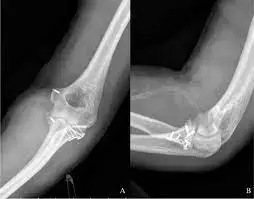- Home
- Medical news & Guidelines
- Anesthesiology
- Cardiology and CTVS
- Critical Care
- Dentistry
- Dermatology
- Diabetes and Endocrinology
- ENT
- Gastroenterology
- Medicine
- Nephrology
- Neurology
- Obstretics-Gynaecology
- Oncology
- Ophthalmology
- Orthopaedics
- Pediatrics-Neonatology
- Psychiatry
- Pulmonology
- Radiology
- Surgery
- Urology
- Laboratory Medicine
- Diet
- Nursing
- Paramedical
- Physiotherapy
- Health news
- Fact Check
- Bone Health Fact Check
- Brain Health Fact Check
- Cancer Related Fact Check
- Child Care Fact Check
- Dental and oral health fact check
- Diabetes and metabolic health fact check
- Diet and Nutrition Fact Check
- Eye and ENT Care Fact Check
- Fitness fact check
- Gut health fact check
- Heart health fact check
- Kidney health fact check
- Medical education fact check
- Men's health fact check
- Respiratory fact check
- Skin and hair care fact check
- Vaccine and Immunization fact check
- Women's health fact check
- AYUSH
- State News
- Andaman and Nicobar Islands
- Andhra Pradesh
- Arunachal Pradesh
- Assam
- Bihar
- Chandigarh
- Chattisgarh
- Dadra and Nagar Haveli
- Daman and Diu
- Delhi
- Goa
- Gujarat
- Haryana
- Himachal Pradesh
- Jammu & Kashmir
- Jharkhand
- Karnataka
- Kerala
- Ladakh
- Lakshadweep
- Madhya Pradesh
- Maharashtra
- Manipur
- Meghalaya
- Mizoram
- Nagaland
- Odisha
- Puducherry
- Punjab
- Rajasthan
- Sikkim
- Tamil Nadu
- Telangana
- Tripura
- Uttar Pradesh
- Uttrakhand
- West Bengal
- Medical Education
- Industry
Fixation group as effective as non-fixation groups in terrible triad injuries of elbow, reveals study

No significant differences in outcomes between fixation and non-fixation groups in terrible triad injuries of elbow reveals a study published in the BMC Surgery.
The ideal treatment of terrble triad injuries and whether fixation of coronoid process fractures is needed or not are still debated. Therefore, we aimed to investigate if terrible triad injuries necessitate coronoid fracture fixation and evaluate if non-fixation treatments have similar efficacies and outcomes as fixation treatments in cases of terrible triad injuries. From August 2011 to July 2020, 23 patients with acute terrible triad injuries without involvement of the anteromedial facet of the coronoid process were included to evaluate the postoperative clinical and radiological outcomes (minimum follow-up of 20 months). According to the preoperative height loss evaluation of the coronoid process and an intraoperative elbow stability test, seven patients underwent coronoid fracture fixation, and the other eight patients were treated conservatively. The elbow range of motion (ROM), Mayo Elbow Performance Score (MEPS), and modified Broberg-Morrey score were evaluated at the last follow-up. In addition, plain radiographs were reviewed to evaluate joint congruency, fracture union, heterotopic ossification, and the development of arthritic changes.
Results: At the last follow-up, the mean arcs of flexion-extension and supination-pronation values were 118.2° and 146.8° in the fixation group and 122.5° and 151.3° in the non-fixation group, respectively. The mean MEPSs were 96.4 in the fixation group (excellent, nine cases; good, tow cases) and 96.7 in the non-fixation group (excellent, ten cases; good, two cases). The mean modified Broberg-Morrey scores were 94.0 in the fixation group (excellent, sevev cases; good, four cases) and 94.0 in the non-fixation group (excellent, ten cases; good, tow cases). No statistically significant differences in clinical scores and ROM were identified between the two groups. However, the non-fixation group showed a significantly lower height loss of the coronoid process than the fixation group (36.3% versus 54.5%). There were no significant differences in clinical outcomes between the fixation and non-fixation groups in terrible triad injuries.
Reference:
Ahn, YS., Woo, SH., Kim, S. et al. Does the coronoid fracture in terrible triad injury always need to be fixed?. BMC Surg 24, 125 (2024). https://doi.org/10.1186/s12893-024-02394-3
Dr. Shravani Dali has completed her BDS from Pravara institute of medical sciences, loni. Following which she extensively worked in the healthcare sector for 2+ years. She has been actively involved in writing blogs in field of health and wellness. Currently she is pursuing her Masters of public health-health administration from Tata institute of social sciences. She can be contacted at editorial@medicaldialogues.in.
Dr Kamal Kant Kohli-MBBS, DTCD- a chest specialist with more than 30 years of practice and a flair for writing clinical articles, Dr Kamal Kant Kohli joined Medical Dialogues as a Chief Editor of Medical News. Besides writing articles, as an editor, he proofreads and verifies all the medical content published on Medical Dialogues including those coming from journals, studies,medical conferences,guidelines etc. Email: drkohli@medicaldialogues.in. Contact no. 011-43720751


